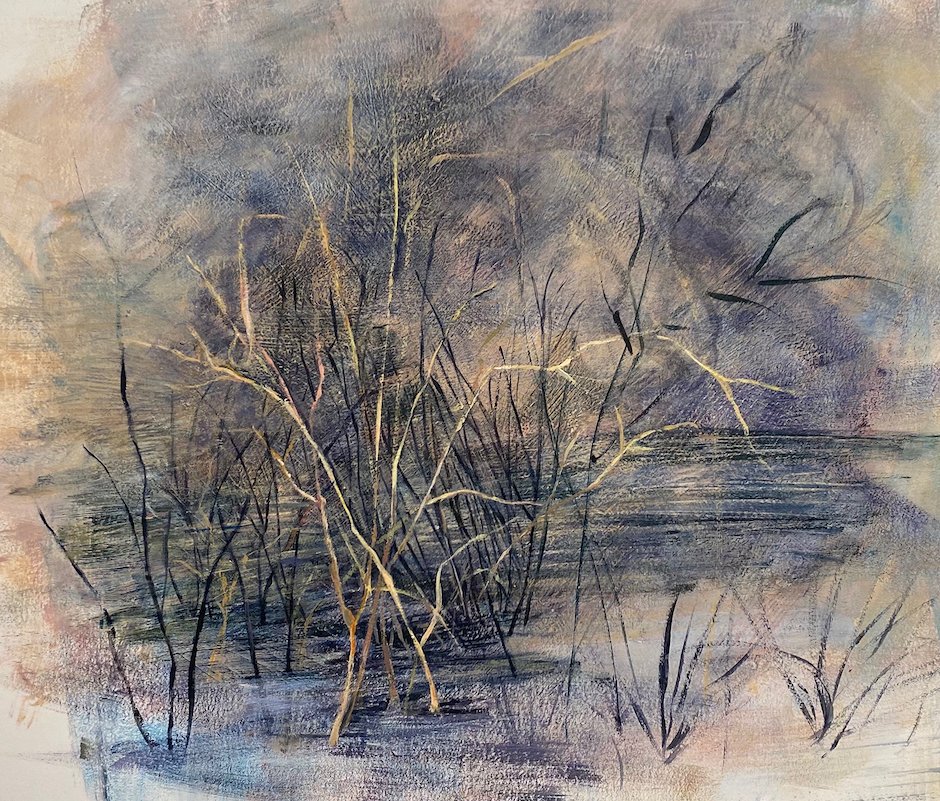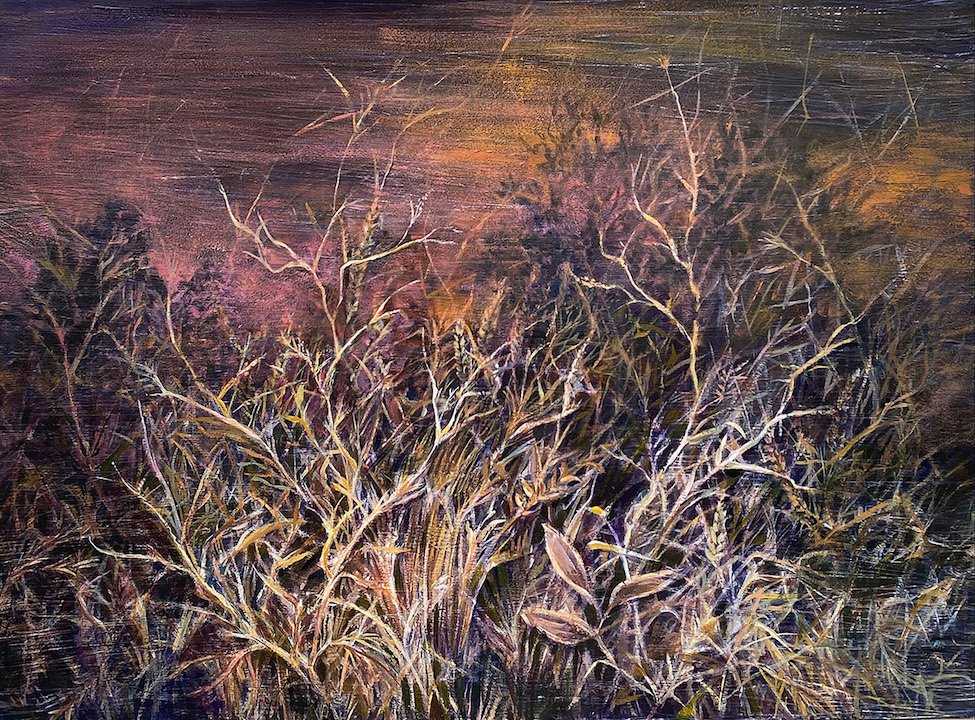Interview with artist Maria Botti Villegas
Maria Botti Villegas is an artist living in El Dorado, Arkansas. Her most recent works use imaginary landscapes to explore nature’s rhythmic cycles of light, darkness, and rebirth. Maria is also an educator. Since 1995 she has taught art to young people at the South Arkansas Arts Center in El Dorado. Additionally, she and her husband, Jorge Villegas are well-known muralists. More of Maria’s work can be found at her website mariabottivillegas.com.
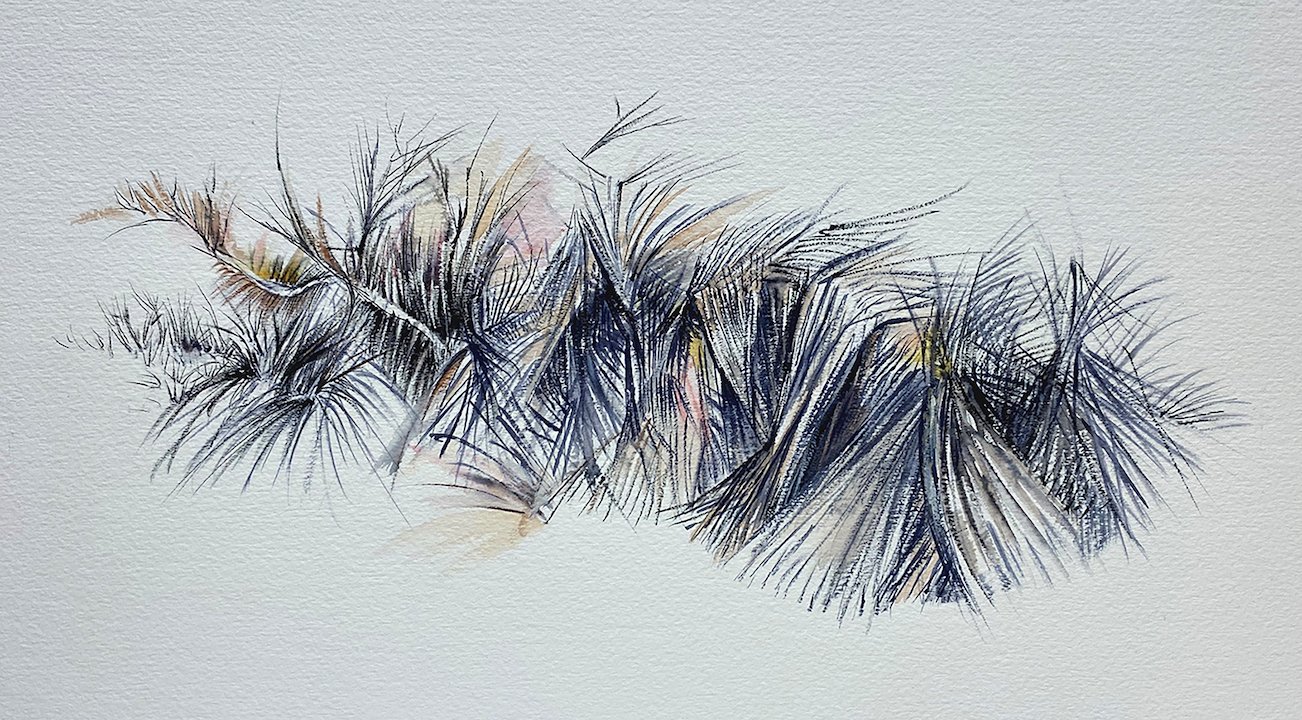
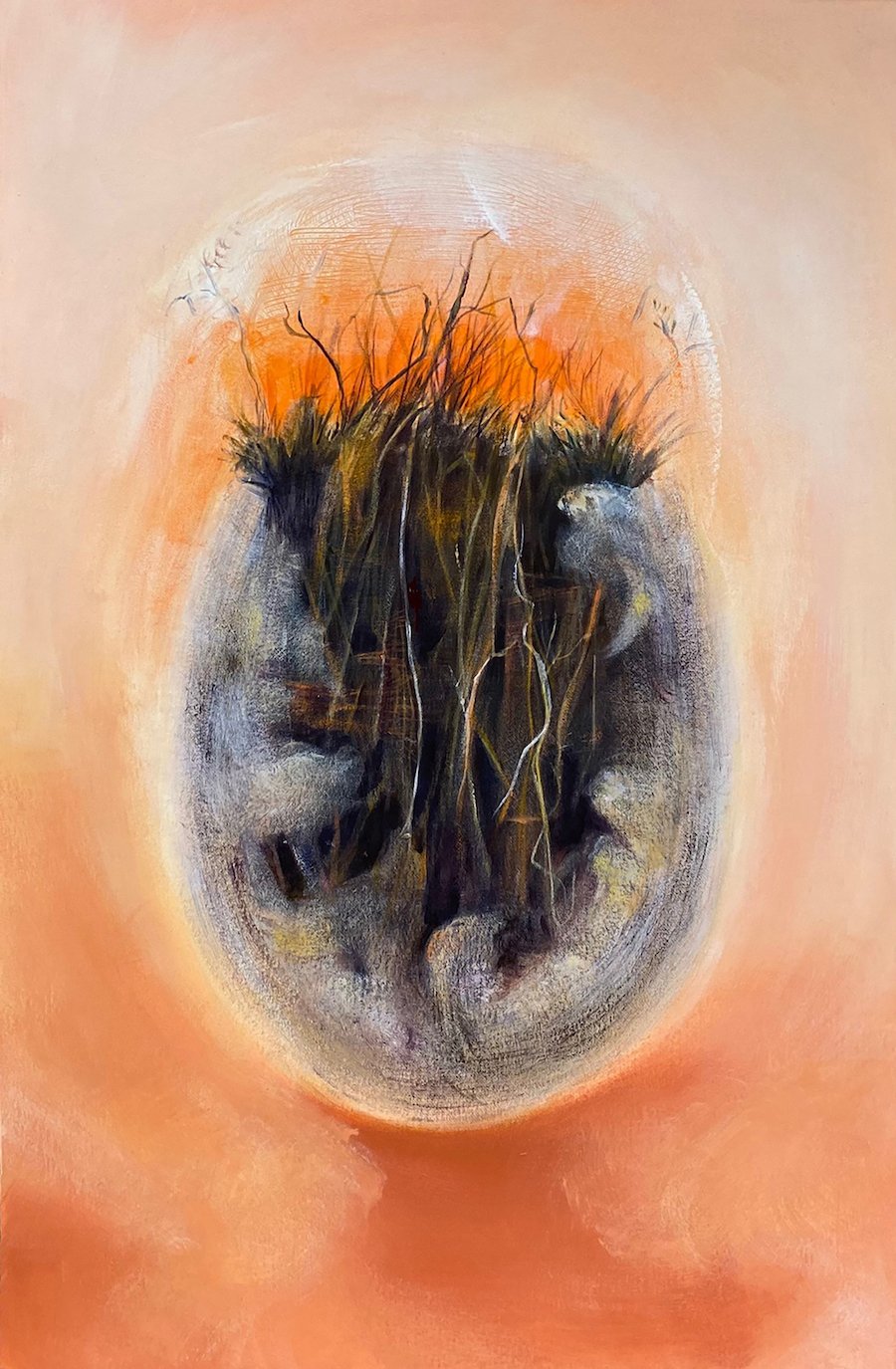
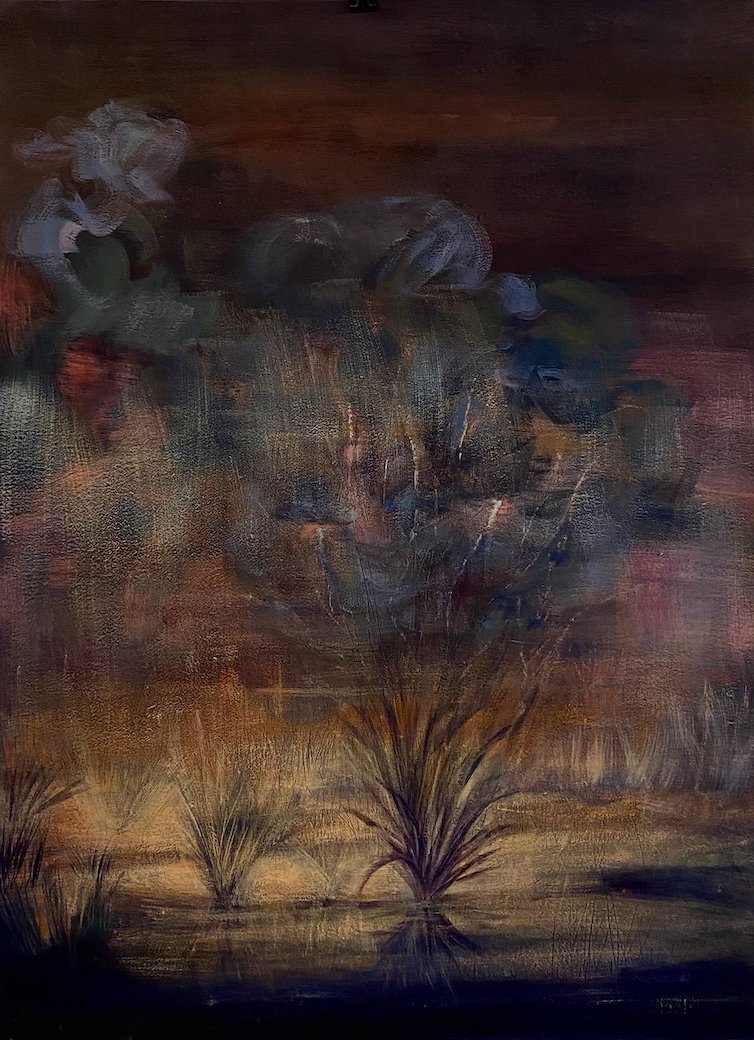
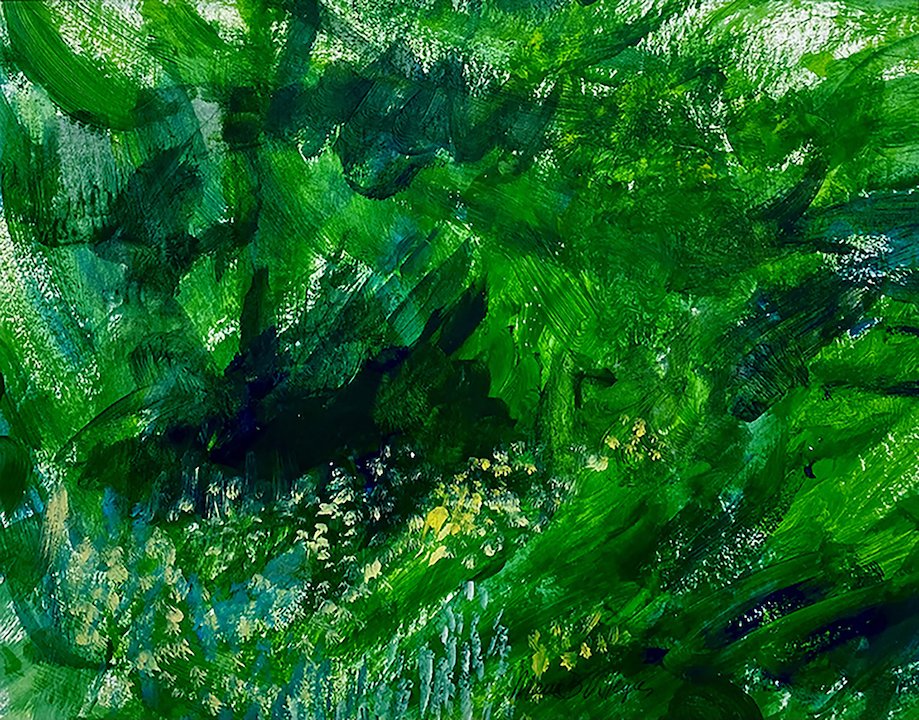
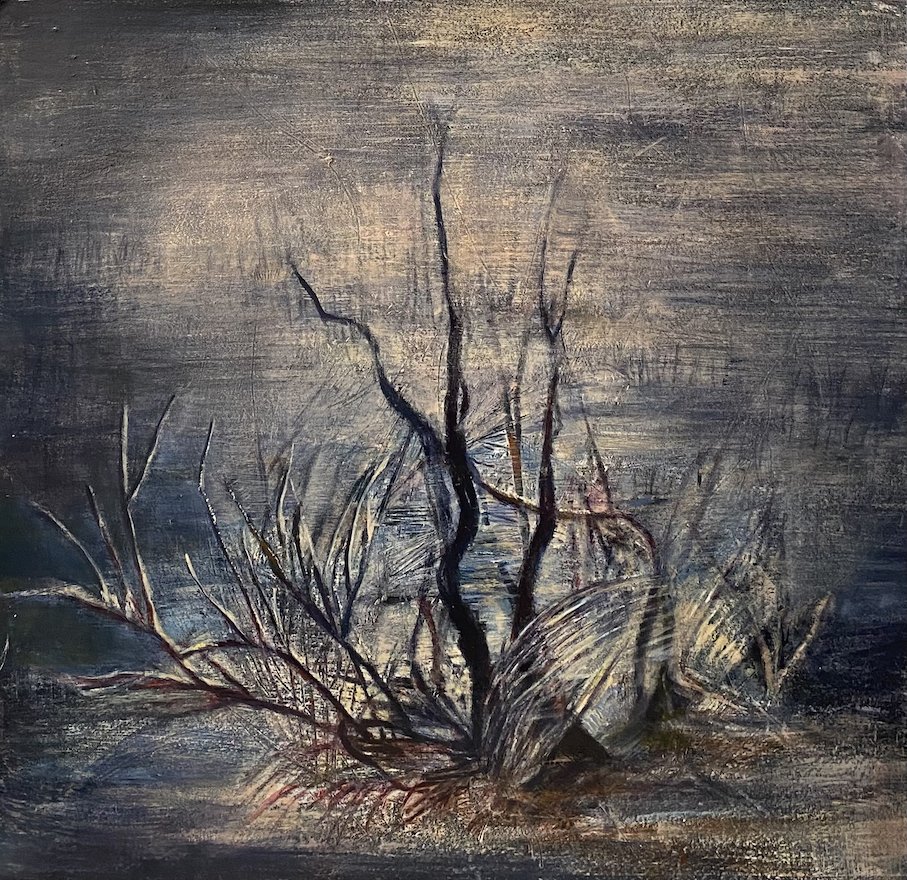
AAS: Maria, tell me about your journey from Buenos Aires, Argentina to south Arkansas.
MBV: I have a five-year Fine Arts degree from the School of Fine Arts Prilidiano Pueyrredón, in Buenos Aires, Argentina. I am half a Spaniard and half an Italian. After I graduated from college, I dedicated my energies to studio time. Also, as a teaching artist, I worked in schools and taught privately in my studio. Over the years, I became a pen and ink illustrator, a graphic designer for a cosmetics company, and briefly a book illustrator. Buenos Aires introduced me to a range of possibilities for earning a living.
In 1990 I was working full time as a manager of Casa del Ángel gallery in the beautiful Belgrano neighborhood in Buenos Aires, located around 15 blocks from my home. This is when my life suddenly intersected with my now husband, Jorge Villegas, an Arts-in-Education artist.
Jorge and I were born in the same city and lived 15 minutes apart but never met. We went to The School of Fine Arts at different times and never knew each other. In 1990, Jorge, already living in El Dorado, Arkansas, came to visit his family in Buenos Aires. He went to the gallery with a friend whose house was close to my gallery. In the next few weeks, we got to know each other more. I told Jorge I had to come to New York to pick up some of my pieces shown in a group exhibit from Argentinian artists at an art gallery in Manhattan. So, he invited me to El Dorado, Arkansas, on my way to New York.
I arrived in Little Rock on March 23, 1991, and I was hooked! I had my first show in Little Rock in 1992, at Square One gallery, now occupied by The Brewery at Vino’s. Also, I became an AIE artist with the possibility of continuing my work as an artist and art educator.
I loved the man, the land, and the South Arkansas landscape. We married in 1993. I am grateful to my husband Jorge Villegas, two wonderful stepchildren, and a supportive community. I am also happy to have become an American citizen in 2004.
AAS: Tell me about your art education. Was your path to becoming an artist and art teacher a linear one?
MBV: Yes and no. I’ve been involved in movement and body expression ever since I can remember. My path intertwined modern ballet and theater with choir singing and art therapy. I have a step-cousin, Aldo Sesana, who is a professional artist in his eighties. When I was a very young child, my cousin was a well-known artist and a publicist. He would hand me drawing pads to draw anything that interested me. I was very independent. I never asked him much for help, so I decided to follow my path of experimentation. I studied dance and was in plays at school, but I also became involved in sports and other activities. Not too much time for visual art!
In my last year of high school, I started thinking about art more seriously. My cousin was a mentor to me. He introduced me to art movies and books, avant-garde, and social movements from abstract to realistic to surrealism. My relationship with him was instrumental in choosing a visual arts career.
During college, I also become an assistant to a comic-book illustrator. He created several dynamic stories about World War II; I helped create special effects in pen and ink, like visual textures from explosions to vegetation, stones, and seas. That helped me develop my skills as a pen and ink illustrator. But I was still searching and although I spent time away from my studio studying psychology and psychoanalysis and even went to India for a time I always returned to it.
AAS: Your most recent works seem to me to explore nurturing and growth using color, texture, and familiar forms set in mysterious almost futuristic settings. Before we talk about specific paintings, has living in south Arkansas inspired these works?
MBV: Living for 35 years in a vast cosmopolitan city has many rewards, but sometimes it separates individuals from close contact with nature or our environment. There are beautiful parks in big cities, but daily living and the urge and timing of a busy schedule are not conducive to the exploration of nature as a focus. I have experienced a new relationship with nature in Arkansas through my cats, Lulu and Krishna. They brought my husband and me a new appreciation for life. I think I am closer to understanding my experiences in my youth and life through my relationship with my feline family and the green spaces around my home.
I am in contact with the soil and its vegetation. Grasses, bushes, pine trees, and lakes are prominent in my mind’s library of images. I feel the power of leaves and buds struggling to thrive in hot summers and cold winters in the silence of the countryside. In Arkansas, nature is a constant revelation.
AAS: I think Plétora is one of my favorite paintings. The layers and depth, and texture are wonderful. I don’t speak Spanish, so I did have to look up plétora (plethora, abundance). Were you referencing the nutrients from the sea?
Plétora, 22” x 14.5” acrylic on paper
MBV: I have a deep relationship with water. I learned how to swim when I was very young. I almost drowned in the middle of the Pacific Ocean when I went to Easter Island with my college mates and professors to study archeological sites in my first year of college! But above all, ocean water, freshwater, and even pool water soothes me and transforms me somehow. Even at night, I have recurrent dreams inside oceans or in a significant body of water. I learned that sometimes the sea is considered the big mother; it might be true.
Plétora or Plethora was destined to be one of those tryout pieces, never finished. I started this piece in the middle of the COVID pandemic without finding what I was looking for. So, I let it go. After vaccinations and boosters, I decided to try again and retake the painting from square one. That’s something that I usually do. I would paint over unfinished works to capture colors and create layers and grids of color-textured foundation. I love discovering that what I see could awaken untold stories! I waited, and suddenly one day, I saw the forms and shapes of new life emerging from the bare waters.
The story was clear to me. The story was about the beginning of new lifeforms from bare soil surrounded by water like a vast, dry lake asking for a renewal. And in a short time, I put myself in that space where there is no critique or judgment, and the images flow as if I were opening a Pandora's box.
AAS: Tell me about Tierra, the title piece from your TIERRA series.
Tierra, 24” x 20.5”, acrylic on paper
MBV:Tierra, or Earth/Soil, was born as a metaphor for the status of our earth nowadays. It takes the same name as a series of around 20 works related to my interpretation of Earth themes.
I started drawing trees at a very young age. I’m fascinated by trees' growth, size, and roots. I guess I’ve been looking for my roots all my life. As in the case of some of my pieces in this series, Tierra did not start with a story; the story found it! I was not intentionally looking for the image—as in the philosophy of Plato; ideas reside in the Ether. I do believe in the message of the unconscious mind. I do believe in letting those stories permeate my work.
Tierra is a silent revelation of our current state of the soil in many parts of the United States and even the world. The Province of Buenos Aires, where I come from, is the one that houses Buenos Aires City. It is a flat land, a cattle region, very fertile. But I have seen the deterioration of lakes and land to industrial parks and development. However, it has been here, in The United States, where I have felt the urge for better soil management.
The position of the image in a square shape adds strength to the message, but at the same time, in this landscape of silent light brown soil, an honest reflection emerges about the location and significance of this dry landscape. Is it now, or is it a futuristic situation happening in our future? I love for the viewer to finalize the story. That’s what I want.
AAS: In Cadencia you seem to be showing nature’s cycle of destruction and rebirth – the rhythm of life and death. Is that a fair interpretation?
MBV: While living in Buenos Aires, I became attracted to constructivism and the power of structures. I would draw big old trees in parks and sit in front of enormous construction sites to draw and photograph the beginning of the construction, before the cement, just the carcass of buildings and all the human energy involved in it. I still adore the power of verticals and horizontals, and diagonals. I also love vegetation and the contrast between organic forms and straightforward shapes. I love the dichotomy. This piece, a mixed media, started as a charcoal drawing of an abstracted form of grass. Directions and energy evolved into a micro-cosmos of canes and greenery, bringing elements of reality and the power of nature. This work was also created during the pandemic, manifesting the rhythm we all feel of things moving together and falling apart simultaneously. The rhythm of a cadence is that things are born and die, develop and disappear—a reflection.
Cadencia, 22” x 30”, acrylic on paper
AAS: Tell me about your painting technique. The texture really complements the depth you achieve in your paintings.
MBV: In college, I was mostly an oil painter. I experimented with water media, especially watercolor and pen and ink. I’m very fond of layering my work. I think the grid of lines creates a most intimate expression of mystery. Even though I work with acrylic because it’s more immediate than oil, I’m aware of the different effects oil can have on a given surface. However, I have found a way to create depth even though I don’t use mediums to thin my acrylics. I use water and time to go back and forth, build layers, and make new ones that show a textured surface of colors and shadows. I am very, very interested in the energy of color itself. I add brilliance and contrast. I sometimes draw first, or I start painting directly on the surface. That’s why it takes me a long time to finish an artwork. I enjoy layering as much as I enjoy finding details and creating new colors.
AAS: Luminoso was selected to be in 2023 Small Works on Paper traveling exhibition. Tell me about that piece and the importance of SWOP and the support of the Arkansas Arts Council. I know you have had pieces in SWOP over the years.
Luminoso, 10” x 7.5”, acrylic on paper
MBV: Luminoso (With Light in Spanish) originated from sketches taken at the Murphy Arts District concert Hall on the occasion of the construction presentation. I am very attracted to the phenomenon of light and shadows in urban spaces. I worked for many years with the sensation of light, especially in machinery and old buildings. So anytime I enter the world of architecture, I am specifically attracted to the power of lights from open windows or sources of light hitting surfaces, creating rhythms and unpredicted shadows and forms interacting in empty spaces. That’s what I like: to show the textured surface grid of human interaction.
Small Works on Paper sponsored by the Arkansas Arts Council program is a dear program. I have participated in past years. Luminoso will be part of the 2023 Show, which interestedly opens in El Dorado in January 2023. SWOP, offers ways for Arkansas artists to be featured statewide. It has become a popular program at the Council. It benefits Arkansas artists in that it provides a way for the artists to be in touch with many rural communities in Arkansas.
AAS: You are one of the teaching artists at the South Arkansas Arts Center in El Dorado. Tell me about that program.
MBV: This is one of the only programs of this kind in South Arkansas. South Arkansas Arts Center, or SAAC, started in El Dorado in the 1960s. A theater was built on the ground floor, and studios and costume rooms were on the second floor. Because art wasn’t taught in the schools back then, a group of women from the El Dorado Service League began working with the Arts Center to create art programs and take them to the schools. In the 80s, AIE Artists Rob Bosanko and Jorge Villegas taught classes for children at SAAC during the school year, in the summer, and within the school system. Artists were invited to teach workshops, and the Arts Center grew more: a new and more extensive gallery was added in the 90s. I started teaching in 1995, offering classes from kindergarten to 12th grade and Spanish-Art sessions. Loved it!
Around 2015 we officially created the Arts Academy with more and more teaching artists joining the Academy. Currently, we have 14 teachers in visual and graphic arts, theater, drama, voice, and piano. We also offer scholarships to low-income students who otherwise would not be able to enjoy after-school classes in the Arts. Despite COVID-19, SAAC has maintained courses in many disciplines. I am honored to be part of this process. Now, SAAC is growing again with a major addition and renovation! Hopefully, we will see it finished next year.
For an educator, teaching is a way of communicating thoughts and ideas. Teaching is indeed rewarding, for there is always feedback around the corner. Whenever I enter a class, I forget my problems or personal thoughts. I’ve seen thousands of kids over the 27 years as a teaching artist at SAAC and an AIE artist. I learned from that experience as much as students learned from what I had to teach. Students act as mirror images of the teachers. Working with the students has allowed me to see myself through the response of the students, like a magic mirror.
Since I still think that I am a teenager inside myself, I probably understand some emotional characteristics and behaviors students manifest. This allowed me to express them through my work as an artist, like in Searching Under the Moonlight.
AAS: Tell me more about Searching Under the Moonlight and what teaching kids has taught you about yourself.
Searching Under The Moonlight, 22” x 30”, acrylic on paper
MBV: I admit I was an odd kid. I remember times in my childhood, around four years old, in Buenos Aires, singing old Latin liturgical songs in my Catholic Church choir. I think I was the only child in the choir. I didn’t understand Latin, but I understood, for some reason, the sacred flow of the music and that emotions were very high. I also remember helping the priest as an altar girl when I was 6 or 7. I wanted to find an explanation for the origin of the world and the universe and my origins since I felt so different from my immediate family. In my youth, I went through painful moments of uncertainty. I was searching for meaning, but I was also the ultimate judge of my life. I was searching like probably these young men in this painting. Although the circumstances and my environment were different, I know we all search for something in our lives: happiness, relationships, opportunities, and a future. My family supported me as an artist. Although my parents feared my choices, they never restricted me enough to prohibit my endeavors. Despite this fact, a feeling of loneliness emerged frequently.
In this painting, I wish the viewer could connect with these young men’s characters and imagine their lives for a moment: their dreams, aspirations, or lack thereof. I just wanted to create an image to make the viewer think about our youth, especially in a rural society like mine. These young men in the painting search for something during the night, illuminated by moonlight -an allusion to the mother figure. I have met students whose futures were taken suddenly by accident, by a firearm, or by overdose. I have also known others who skipped the bridge of uncertainty and found a place in the world and inside themselves. This piece is a chronicle, a way to empathize with the life of these youngsters whose life circumstances I don't know, but it evokes a sense of mystery.
AAS: It was interesting to learn that you have been involved in 30 or more murals in Arkansas and Louisiana. Tell me more about that.
Maria and husband Jorge in front of their mural in Prescott, Arkansas
MBV: For me, painting murals created a good partnership with my husband, Jorge Villegas, a professional muralist. In 1994, Anthony Forest products approached him to create a mural on the wall of its headquarters in El Dorado. By the Summer of 1995, we had finished the 25-by-100-foot mural on Anthony’s building. This mural brought more commission murals in El Dorado, Mena, Prescott, Arkansas, Springhill, Louisiana, and others. We designed and painted murals in El Dorado and Cabot churches and a Chamber of Commerce and recreational centers.
A mural is a larger-than-life painting. The impact of a message is more direct and sometimes overwhelming. For people passing by, murals can bring a sense of awe. Murals can change the city's image, place, and surrounding areas. In Prescott, Arkansas, the mural is part of the heritage, so much so that in 2000 the mayor, at that time, decided to purchase surrounding buildings to create the Nevada County Library.
In the summer of 2016, we refurbished our mural in Prescott. We invited our artist friends Hamid Ebrahimifar, Tim Ellison, and even one of my art students, Michaela Wise, to help us refurbish the wall. It was beautiful to share our time. We spent many hours together, which made us grow closer. Working with our hands in any form is an activity that reaches the heart and calms the mind.
Mural in Prescott, Arkansas.
